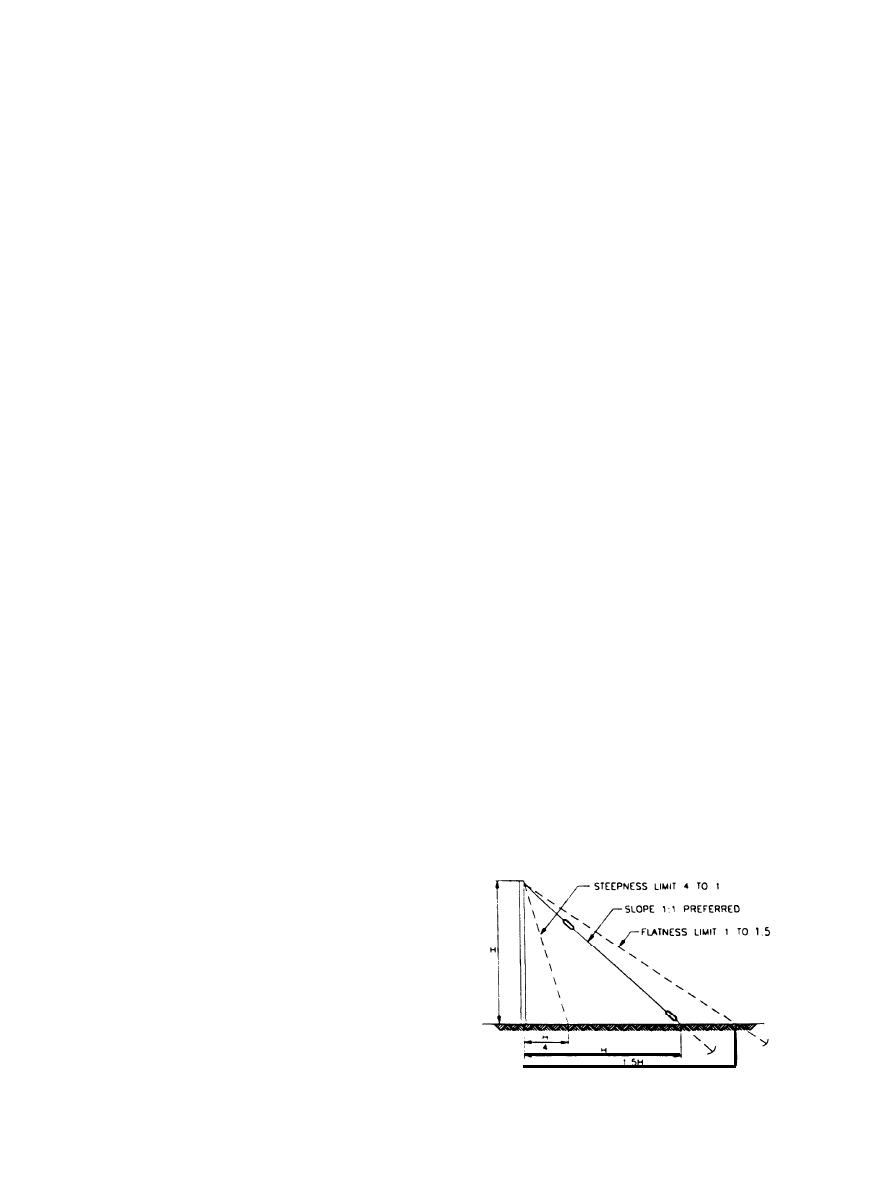

Custom Search
|
|

|
||
 TM 5-684/NAVFAC MO-200/AFJMAN 32-1082
c. Cleaning. Insulators in severely contaminated
b. Altitude derating. As altitude increases the in-
sulation value of air decreases, so that an insulator
atmospheres may require frequent cleaning. Pollut-
at a high elevation will flashover at a lower voltage
ant buildup increases operating stresses and in-
than the same insulator at sea level. The low fre-
creasing the flashover level will help compensate for
quency dry flashover value of an insulator at 7,000
this. Such an increase does not eliminate the need
feet (2,100 meters) is about 80 percent of the low
for cleaning insulators.
frequency dry flashover at 1,000 feet (300 meters).
Section XIII - GUYS
4-48. Guy functional requirements.
where. Copper-covered steel wire should be used
only where specifically justified to meet an environ-
Guys are used whenever the line wires would tend
mental requirement.
to pull the pole out of its normal position because of
b. Wire replacement. Rated breaking strength
unbalanced forces from dead-ended conductors,
used for replacement guys should not be less than
changing conductor sizes or material, or other con-
6,000 pounds (2,700 kilograms). Replacement guy-
ditions. The vertical forces of the line are resisted by
ing should always be engineered. Because of corro-
the pole, while the guy counteracts the unbalanced
sion or damage, the strength of existing guys on a
horizontal components.
pole may be less than for a new guy stranding of the
a. Inadequate guying. Inadequately guyed lines
same initially designed diameter. Existing guy
soon begin to sag, causing an unsightly installation,
strands may be overloaded, if it is assumed they
degrading line reliability, and possibly creating an
have the same strength as new strands. Guy
unsafe supporting structure because the pole is
strands should not exceed the steepness and flat-
overloaded.
ness limits of figure 4-18. If these limits cannot be
maintained, then pole embedding may be necessary.
b. Guy components. Guy installations usually in-
clude the guy wire (strand), the anchor assembly,
4-50. Anchor assemblies.
attachments to poles and anchor rods from the guy
strand, strain insulators, and sometimes guy mark-
An anchor assembly with a rod and patent anchor
ers.
buried in the ground is normally used to hold down
the guy strand. Above-ground objects, such as trees
c. Replacements or modifications. When any guy
or buildings, have sometimes been used for tempo-
component becomes weakened due to corrosion or
rary guying, but only exceptional circumstances
physical damage, that component should be re-
should justify any such interim use. Once installed,
placed. Retension guy wires where any slack is ob-
assemblies seldom require any maintenance except
served. If a change is made in the number, size, or
for inspection of the anchor rod for corrosion near
location of conductors, guys should be added or
the ground line, where repair should be provided as
changed as required by the changed conditions.
needed. In soils with a resistivity less than 30,000
Guys should be checked whenever poles are
ohm-centimeters and where corrosion of under-
checked.
ground ferrous structures is a problem, galvanized
steel anchors and guys should not be connected to
4-49. Guy strand.
copper grounding systems because severe corrosion
The major component in each guy installation is the
may result. Instead, strain insulators need to be
guy strand or wire, whose rated breaking strength
installed in the guy wire. When replacing an assem
determines the requirements for all other compo-
nents.
a. Wire types. Wire of either three or seven
strands is commonly used. Each strand consists of a
steel core having a protective coating of zinc or
aluminum. Zinc coatings are available in standard
ASTM coating weights, and a Class A coating
weight is half of a Class B coating weight and a
third of a Class C coating weight. The coating
weight used is dependent upon atmospheric corro-
sion. Class A is used in dry or desert areas with
little industrial contamination; Class C (or alumi-
num) is used in salt-laden or foggy areas or heavily
contaminated locations; and Class B is used else-
Figure 4-18. Steepness and flatness limits for guy strands
4-25
|
 
|
|
 |
||